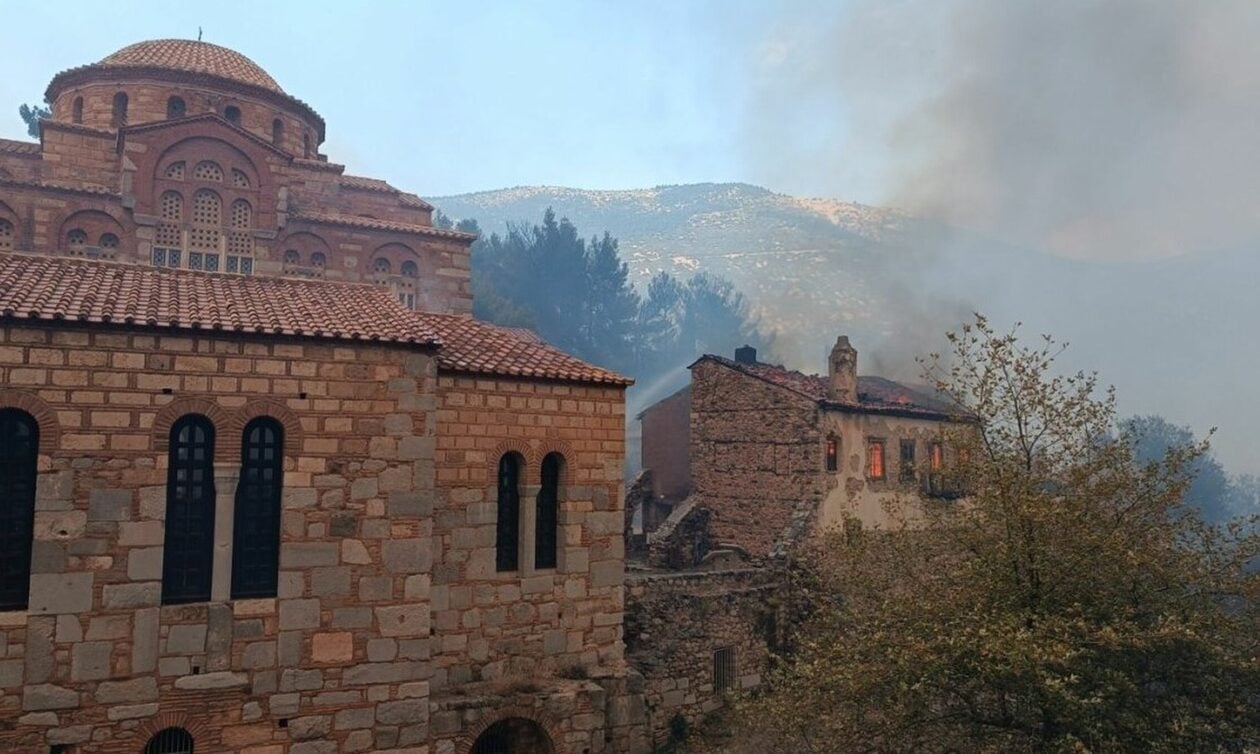
The UNESCO-designated monastery of Hosios Loukas in Viotia in central Greece was damaged by a wildfire raging in the area on Wednesday.
Founded in the mid-10th century, the monastery is one of the most important monuments of Middle Byzantine architecture and art and has been listed on UNESCO’s World Heritage Sites since 1990, along with the monasteries of Nea Moni and Daphni.
The monastery was evacuated earlier on Wednesday, and despite the efforts of a strong fire-fighting force, one of the site’s oldest buildings was destroyed.
It is believed that there has been no damage to the artifacts, icons, and frescoes of the main church of the monastery.
Hosios Loukas Monastery included in the UNESCO World Heritage List
Hosios Loukas is situated at a scenic site on the slopes of Mount Helicon. It was founded in the early 10th century AD by the hermit, Luke of Steiris, whose relics are housed in the monastery to this day.
St. Luke (not to be confused with the Evangelist author of the Gospel of Saint Luke), was a hermit who died on February 7, 953.
The main shrine of the monastery is the tomb of St. Luke, originally situated in the vault, but later placed at the juncture of the two churches.

The monastery derived its wealth, including funds required for construction, from the fact that the relics of St. Luke were said to have exuded myron, a sort of perfumed oil that produced healing miracles. Pilgrims hoping for miraculous help were encouraged to sleep by the side of the tomb in order to be healed by incubation.
The Hosios Loukas, the oldest in the complex, is the only church known with certainty to have been built in the tenth century on its site in mainland Greece.
The Hosios Loukas adjoins a larger cathedral church, or Katholikon, tentatively dated to 1011 to 1012. The Katholikon is the earliest extant domed-octagon church, with eight piers arranged around the perimeter of the church.
According to UNESCO, Hosios Loukas represents, with its admirable mosaics on a gold background, unique artistic achievements. “On this basis, it has been included on the World Heritage List,” it was said.
Hosios Loukas is an outstanding example of a type of construction characteristic of the middle period of Byzantine religious architecture.
The monastery complex of Hosios Loukas and particularly its namesake, Katholikon (main church), preserves its initial 11th-century form intact.
This includes architectural and decorative elements, namely the mosaics, frescoes, architectural sculptures, marble revetment, and pavements. Few were the losses or repairs throughout the centuries. One of these was the dome that collapsed and was rebuilt possibly in the 18th century, UNESCO says.
See all the latest news from Greece and the world at Greekreporter.com. Contact our newsroom to report an update or send your story, photos and videos. Follow GR on Google News and subscribe here to our daily email!



